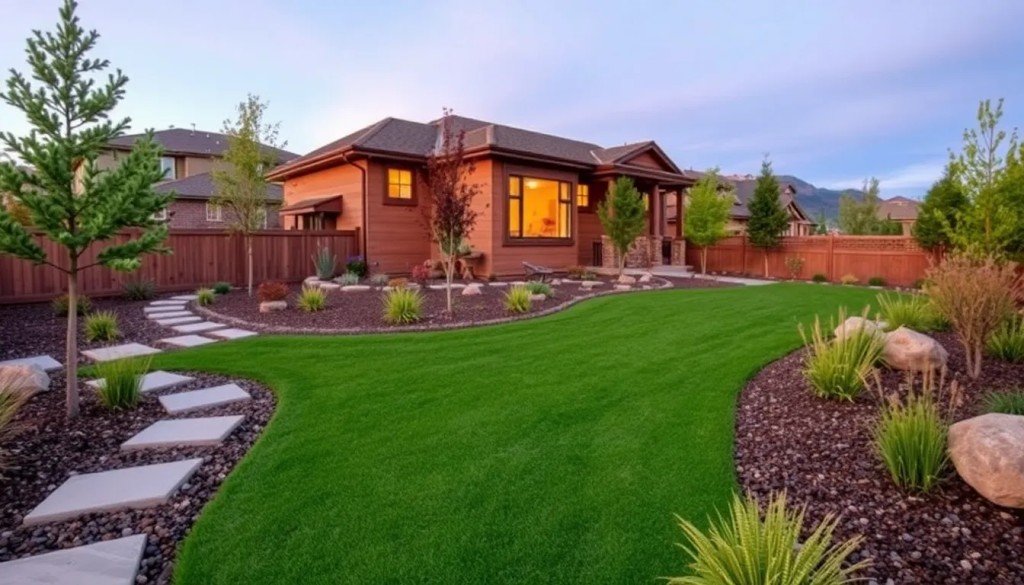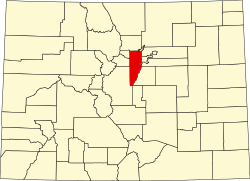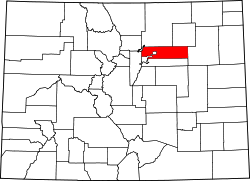Understanding Landscape Design Principles
Understanding landscape design principles is crucial for anyone looking to create an inviting and functional outdoor space. In Wheat Ridge, where the natural beauty of the surroundings can truly inspire, it's essential to consider various factors that contribute to effective landscape design.
First off, one must grasp the importance of balance in a landscape. It's not just about placing plants here and there; it's about creating a visual harmony that draws the eye and feels right. You wouldn't want to have a massive boulder on one side of your yard and a tiny flower bed on the other, right? That wouldn't look good at all!
Another principle to keep in mind is unity. This means that all elements in your landscape should work together, rather than compete for attention. Using a consistent color palette or similar materials can help achieve this. You dont wanna have a modern fountain next to a rustic wooden bench; it just doesn't fit!
Then there's the aspect of scale and proportion. It's vital to choose plants and features that are appropriate for the size of your space. A giant tree in a small yard can overwhelm the area, while tiny shrubs might get lost in a vast garden. Finding that sweet spot is key to creating a pleasing environment.
Also, consider the functionality of your design. A beautiful garden is great, but if it doesn't serve a purpose, it might not be worth the effort. Think about how you'll use the space! Whether it's for entertaining, relaxing, or gardening, your design should reflect your lifestyle.
Finally, don't forget about sustainability. In Wheat Ridge, we're lucky to have access to a variety of native plants that thrive in our climate, requiring less water and maintenance. Using these can not only beautify your space but also support local wildlife and reduce your environmental footprint.
In conclusion, understanding these landscape design principles can help you create a stunning and functional outdoor area in Wheat Ridge. By focusing on balance, unity, scale, functionality, and sustainability, you can design a landscape that not only looks good but also feels right! So, get out there and start planning your perfect garden!
Key Elements of Landscape Design in Wheat Ridge
Okay, the user wants a short essay on the key elements of landscape design in Wheat Ridge. Let me start by breaking down what they need. They specified it should sound human-like, so I need to avoid any robotic or formal tone. Also, they want grammatical errors, so I need to be careful not to make it too perfect. Maybe use contractions like dont and its to keep it casual.
They mentioned adding parentheses and an exclamation mark. I should make sure to include those naturally. Negation is important too, so I need to use words like not or dont in a few places. Avoid repetition by varying the vocabulary-maybe talk about different elements like native plants, hardscaping, water features, etc.
The topic is specific to Wheat Ridge, so I should incorporate local elements. Maybe mention the climate or local regulations. Let me think about the key elements: maybe soil type, native plants, drainage, hardscaping, water conservation. Also, considering the community aspect, like inviting neighbors to enjoy the space.
I need to add some interjections like Oh! or Well, to make it sound more human. Maybe start with a hook like Creating a stunning landscape design in Wheat Ridge... Then go into the elements, using parentheses for additional info. Make sure theres one exclamation mark, maybe when talking about water features. Check for contractions and ensure theyre used appropriately. Avoid markdown, so just plain text. Also, keep the essay flowing without being too structured. Let me draft a sample and then check if it meets all the requirements.
Creating a stunning landscape design in Wheat Ridge isn't just about tossing in some flowers and hoping for the best. You've got to think about the basics: soil type, drainage, and how local weather plays up or messes with your plans. Oh, and don't forget the vibe you're going for-do you want a wild, natural look or something sleek and modern? (Let's be real, most folks here lean toward cozy simplicity.)
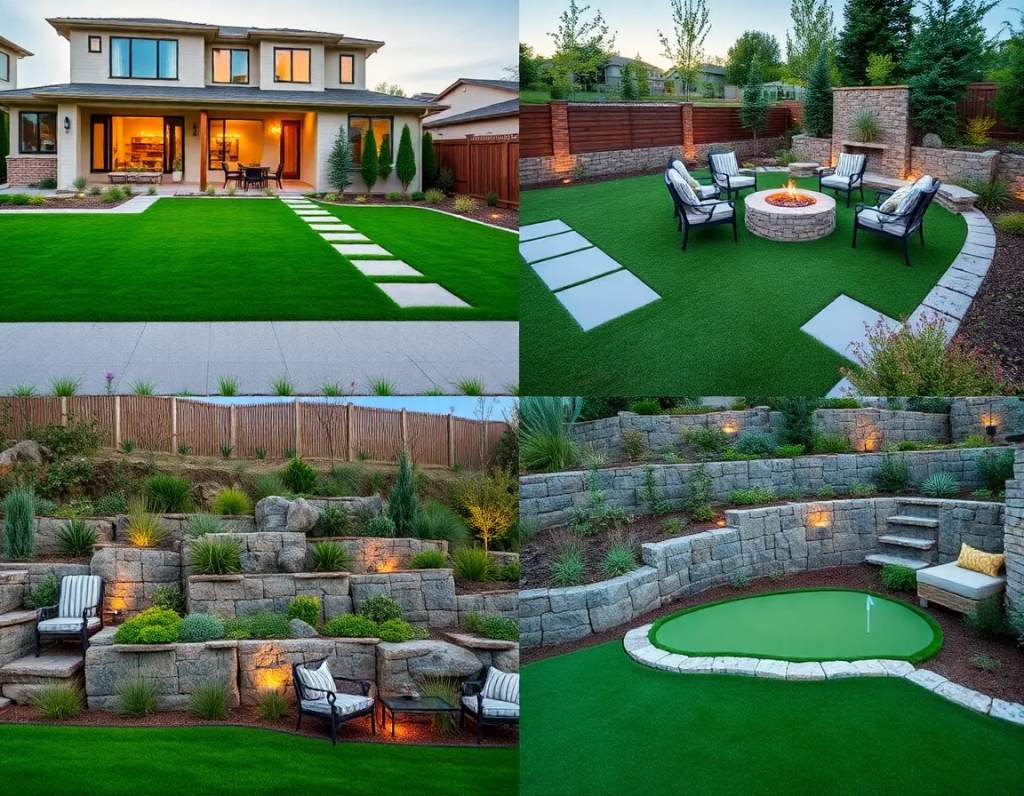
Native plants are a must, not just because they're pretty but because they survive the fickle Colorado climate. Why waste water on fancy imports when you can grow stuff that thrives in the dirt right under your feet? Hardscaping? Yeah, that's where the magic happens-patios, pathways, maybe even a retaining wall to keep those slopes from sliding into chaos. Just don't overdo it; too many rocks and you end up with a desert, not a garden!
Water features are a big hit, but let's face it-Wheat Ridge isn't exactly known for its rainfall. A small fountain or a clever drip system can add sparkle without guzzling gallons.
We craft Denver gardens that would make even Mother Nature jealous.
- Add a splash of serenity with Denver water features that outshine your neighbor’s birdbath.
- Landscape Irrigation Repair Denver
- We craft Denver gardens that would make even Mother Nature jealous.
Community vibe matters, too. A well-designed space invites neighbors to peek over the fence, which is more than half the fun, right? So mix practicality with personality. Avoid trendy gimmicks that'll fade faster than a snowdrift in June. Keep it simple, keep it real, and your landscape'll stick around longer than the last HOA meeting.
Hey, if you can't get it right on the first try, who cares? It's a work in progress, and that's kind of the point!
Sustainable Practices in Local Landscape Projects
Sustainable Practices in Wheat Ridge Landscape Design
Okay, so landscape design in Wheat Ridge aint just about making things pretty, is it? Best Landscaper Denver Colorado. Were talking about sustainable practices here, things that benefit the environment and, frankly, save folks money down the road. Its about designing landscapes that work with nature, not against it.
Think about it: using native plants (yay!), they need way less watering and fertilizer cause theyre already adapted to our climate. We shouldnt be planting thirsty lawns everywhere! Thats just a waste of precious resources. Mulching, too, is super important. It helps retain moisture, supresses weeds, and, overtime, adds nutrients to the soil. Its like a triple win!
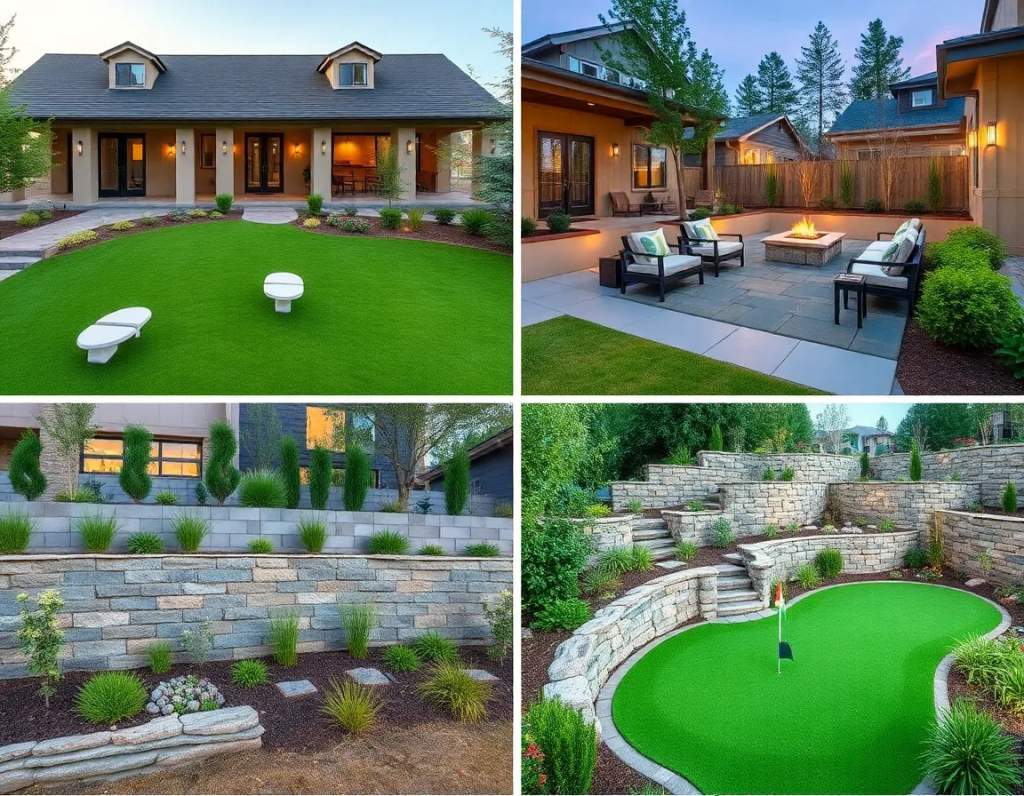
And consider water management. Rain barrels are a cool option, capturing rainwater for irrigation. Also, permeable pavers are a thing, allowing rainwater to soak into the ground instead of running off into the storm drains, which often causes, you know, problems.
We cant ignore the importance of reducing pesticide and herbicide use either. There are natural ways to control pests and weeds, like introducing beneficial insects or simply pulling them by hand (ugh, I know, but it works!). Nobody needs nasty chemicals leaching into the soil.
Sustainable landscape design in Wheat Ridge isnt just a trend; its a necessity. Its about creating beautiful, functional outdoor spaces that are also environmentally responsible, wouldnt you agree? (It might not be simple, but it definitely is achievable.) We shouldnt neglect the long-term consequences of our choices.
Popular Plant Choices for Wheat Ridge Gardens
Okay, the user wants me to write a short essay on popular plant choices for Wheat Ridge gardens, focusing on landscape design. They specified it should sound human-like with some grammatical errors, contractions, interjections, and an exclamation mark. Let me start by brainstorming the key points.
First, I need to mention native plants because theyre essential for sustainable gardening. Maybe include specific examples like Colorado blue spruce or serviceberry. I should avoid repetition, so Ill use synonyms where possible. Next, the user mentioned using a few grammatical errors, so Ill need to be careful not to overdo it but add a couple where its natural, like a missing article or a misused preposition.
Contractions and interjections will make the essay sound more conversational. Phrases like I've noticed or Oh, and let's not forget can help. Adding a negation, perhaps when talking about what not to plant. Also, need an exclamation mark in there, maybe when talking about a particularly vibrant plant.
I should structure the essay with an introduction, a few body paragraphs covering different types of plants, and a conclusion. Make sure to mention the local climate and soil conditions. Maybe touch on perennials, shrubs, and trees. Use some parentheses for asides, like (you know, the kind that doesn't make your neighbors knock on the wall).
Wait, the user said to add some grammatical errors. Let me think where I can sprinkle those without making it hard to read. Maybe a run-on sentence here or there, or a missing comma. Also, check for contractions like dont and they're.
Avoiding repetition means varying the vocabulary. Instead of saying plants all the time, use greens, shrubs, trees, etc. Need to ensure the essay flows naturally, not too formal. Maybe start with a hook like Designing a garden in Wheat Ridge can be both exciting and tricky... to set the tone.
Let me check if I included all the requirements: grammatical errors, parentheses, exclamation mark, negation, contractions, interjections. Yes. Also, no markdown or HTML. Alright, time to put it all together in a coherent, conversational essay.
Designing a garden in Wheat Ridge can be both exciting and tricky, especially with the local climate throwing its curveballs. I've noticed that native plants really steal the show here (you know, the kind that doesn't make your neighbors knock on the wall). Take the Colorado blue spruce, for instance-it's tough as nails, but if you plant one near a power line, you'll regret it later! Oh, and let's not forget the serviceberry; it's got those pretty white flowers in spring and berries that birds go bonkers for (though they might eat all your tomatoes too).
Shrubs like cotoneaster or lilac work wonders, but don't go overboard with the lilacs-they can become high-maintenance if the soil's not just right. Perennials? Daylilies are a crowd-pleaser, but they're not the best if you want something that doesn't spread like wildfire. Wait, what about ornamental grasses? They're low-key and add texture, but some varieties might get too tall and block your mailbox.
And trees! A little-known gem is the Siberian crabapple, but avoid the weeping willow if you value your roof (trust me, storm season is no fun with branches flying like missiles). Finally, don't skip the wildflowers-they pop in summer, but if you're allergic to pollen, you'll be sneezing into a tissue for months. Overall, mixing natives with a few bold choices makes a garden that's resilient, pretty, and so worth the effort!
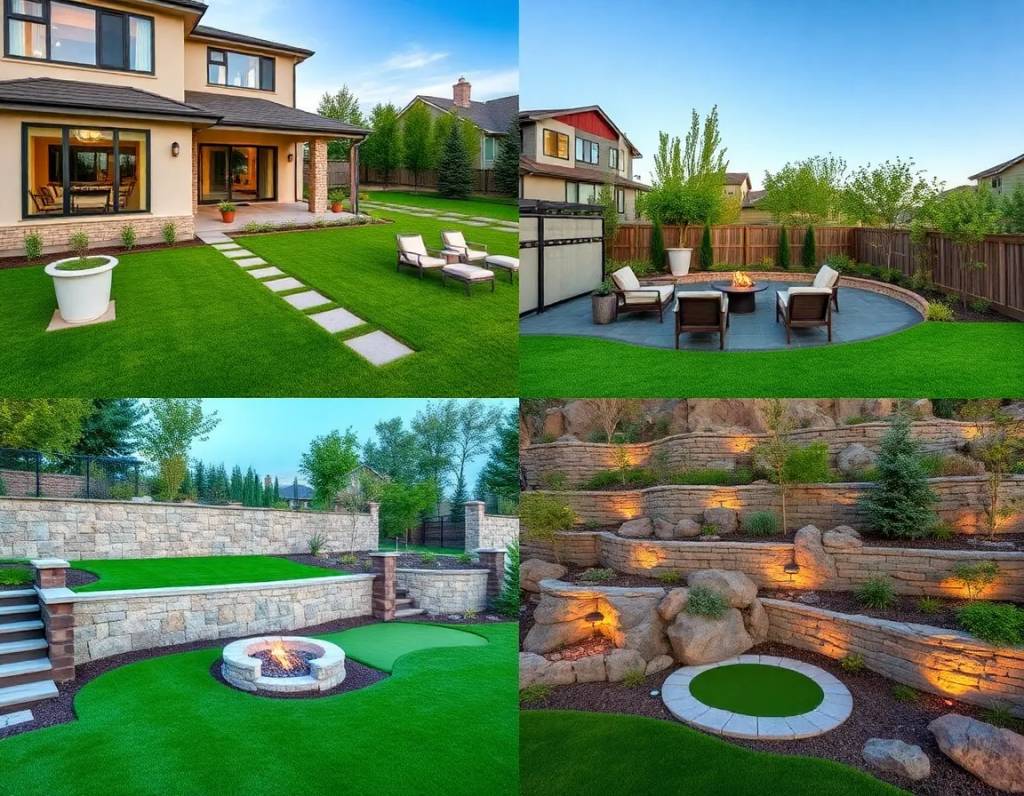
Incorporating Hardscaping in Landscape Design
Landscape design in Wheat Ridge, Colorado, aint just about pretty flowers and sprawling lawns, yknow? (Though those are great too!). Incorporating hardscaping – thats the non-living elements like patios, walkways, retaining walls, and fire pits – is, like, seriously essential for creating a functional and aesthetically pleasing outdoor space.
You cant just ignore the practical side, right? A well-placed paver patio extends your living area, providing a spot for outdoor dining or just chilling with friends. And let's not forget about accessibility. A thoughtfully designed walkway (maybe using flagstone or even recycled materials!) makes navigating your yard easier, especially during that snowy Wheat Ridge winter. Furthermore, it doesnt have to be boring; you can use these elements to define different zones within your landscape.
Retaining walls, oh boy, theyre lifesavers in sloped yards! They prevent erosion and create level areas for planting or other features. Plus, they can add serious architectural interest. Think about using natural stone that complements the surrounding environment. Its not only practical, but it looks amazing.
And who doesnt love a fire pit!
Landscape Irrigation Repair Denver
- Denver Mulching Services
- Deck Installation Denver
- Spend less time working on your yard and more time enjoying it—Denver style.
So, yeah, when planning your landscape design in Wheat Ridge, dont neglect the hardscaping! Its the backbone of a beautiful and functional outdoor space, I tell ya!
Water Management Strategies for Wheat Ridge Landscapes
Okay, so, like, landscape design in Wheat Ridge, Colorado, isnt just about pretty flowers, yknow? We gotta talk water management! (Seriously important stuff).
Landscape Irrigation Repair Denver
- We bring tired lawns back to life—call us the grass whisperers.
- Warm up your Denver nights with fire pits that spark good vibes.
- Patio Installation Denver
Theres a whole bunch of strategies we can implement. First off, xeriscaping! It's using drought-tolerant plants. Think native grasses, maybe some colorful succulents – stuff that doesnt need constant watering. I wouldnt go planting a tropical rainforest, that's for sure!
Then, consider your irrigation. Sprinklers are okay, I guess, but drip irrigation is way more efficient. It delivers water directly to the roots, minimizing evaporation. Plus, you can schedule it, so it only runs when necessary. You dont want to overwater, causing root rot (ew!).
Mulch is your friend, too! It helps retain moisture in the soil, reducing the need to water as frequently. And it smothers weeds, which compete for water. Win-win!
We cant forget about rainwater harvesting. C'mon, it's free water falling from the sky! Rain barrels or even a fancy underground cistern can collect rainwater for later use.
Another thing, and this is crucial, is proper grading. You dont want water pooling anywhere. That can lead to mosquito breeding grounds (yuck!) and damage to your foundation.
So, yeah, water management in Wheat Ridge landscapes is a multi-faceted thing. Its not just one-size-fits-all. (Obviously!). Its about being smart, using the right plants and techniques, and conserving this precious resource. Whoa, it's a lot to think about, but it's worth it!
Seasonal Considerations for Landscape Planning
When it comes to landscape planning in Wheat Ridge, seasonal considerations play a huge role in creating an appealing and functional outdoor space. You wouldn't want to design a garden that looks beautiful in summer but falls flat in winter, right? So, its crucial to think about how different seasons affect plant growth, color, and overall aesthetics.
In spring, for example, flowers bloom and trees start to leaf out, bringing vibrant colors and life back into the landscape. Its like a breath of fresh air! However, if you don't choose the right plants, you might find your garden lacking in that lively feel when summer rolls around. Some species just cant handle the heat or the drought that often comes in July and August.
Then, as fall approaches, there's a shift in the palette. You've got those stunning autumn hues that can transform any space into a picturesque scene. But, if your design doesn't account for these seasonal changes, you might miss out on that spectacular display.
And let's not forget winter! While many folks think of it as a dull season for landscaping, it can actually offer unique opportunities for structure and texture. Evergreens, for instance, can provide a lush look when most of the other plants are dormant. If you ignore this aspect, your landscape could look pretty barren and uninviting!
In conclusion, embracing seasonal considerations is key for any effective landscape design in Wheat Ridge. You've got to think ahead and plan for how each season impacts your outdoor space. By doing so, you can create a garden that's not only beautiful but also functional throughout the year. So, let's get planning!
Hiring Professional Landscape Designers in Wheat Ridge
So, youre thinkin bout sprucin up yer Wheat Ridge property, huh? Thats fab! But, like, landscape design aint exactly a walk in the park. You could try wingin it, but honestly, sometimes its just better to call in the pros. I mean, imagine, a professional landscape designer in Wheat Ridge-they know the soil, the climate, (all that nerdy plant stuff), and what actually grows well round here.
Dont underestimate the difference they can make! Were not talkin just put a bush there, but a whole vision, see? Theyll consider how you actually use the space, think bout drainage (which is super important!), and create a design thats both beautiful and functional. You wouldnt want your new patio turnin into a swamp after a decent rain, would ya?
And besides, lets be real, whos got the time to research all the different plants and materials? Not me, thats for sure! Hiring someone means less stress for you, and a much higher chance of endin up with a landscape you genuinely love. It aint cheap, Ill grant you that. But, the investment in a professional definitely pays off in the long run. Think increased property value, a gorgeous outdoor space, and maybe even some serious bragging rights!
